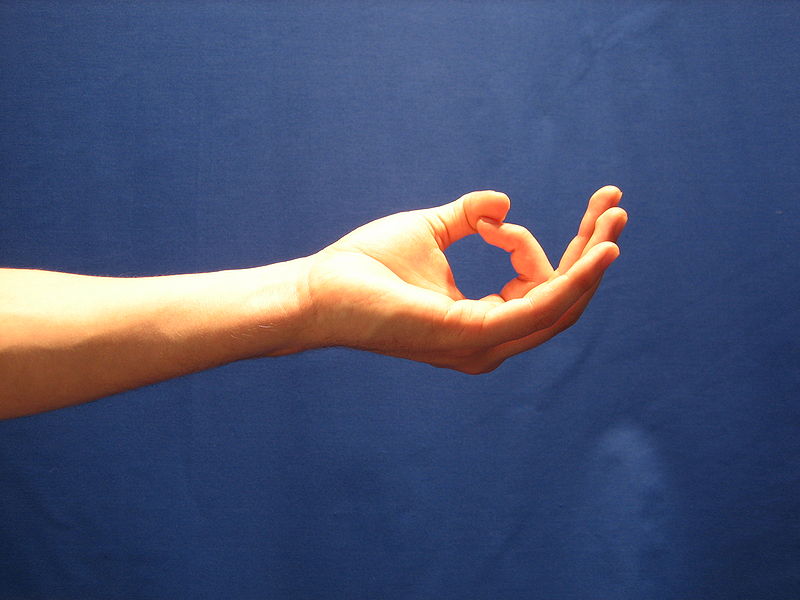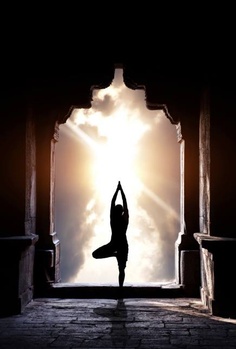Beginner’s Guide to Yoga Breathing Exercises (Pranayama)
Beginner’s Guide to Yoga Breathing Exercises
How to Practice Yoga Pranayama
The vast benefits of yoga pranayama, or yoga breathing exercises, are now starting to be discovered by mainstream society. It is inevitable, to those of us familiar with this profound science, that pranayama will gain equal, if not greater, popularity than the physical yoga exercises (Hatha Yoga Asanas) have done so far. This is because pranayama is absolutely something everyone can practice, regardless of age or physical prowess. If you can breathe, you can do pranayama.
The beauty with yoga breathing is that simple techniques can bestow terrific benefits and that learning and practicing these techniques is something well within reach of us all. Whether you are a beginner or advanced yogi, pranayama is something you will find to be a powerful tool to help you with your spiritual evolution. That being said, there are certain guidelines and recommendations that you should follow with regard to pranayama practice, and in this article I would like to provide those to you.

If you are an advanced yogi, from the point of view of Hatha yoga practice, and you have not done much pranayama, then you should approach this science with the same respect as a beginner would. This is because prana, or life-force, is the vast energy of atoms, and the body’s capacity to handle such energy should be built up gently and systematically over time. Rushing pranayama practice can create imbalances in the systems and other problems, that could easily have been avoided if an intelligent approach had been embraced.
Beginner’s Guide to Yoga Pranayama Practice
- Clothing: Clothing should be loose, specially around the abdomen. This will ensure that the natural movement of the diaphragm is not impeded when doing the breathing exercises.
- Diet: You should not have eaten any heavy meal at least 2-3 hours prior to practicing pranayama. The stomach should be empty. It is fine to sip some water though during the practice to stay hydrated, specially when doing heat generating vigorous exercises. If your diet can consist of light, fresh food that will help the cleansing process as well.
- Time: Dawn is a terrific time to practice yoga and meditation, but this is more so for pranayama practice. This is because the early morning air is fresh and at this time the air contains the most amount of prana. Practicing at this time, will bestow benefits faster. Of course, if this is not feasible, no worries, practice when you can. Here is an article on How to Help You Become an Early Riser.
- Posture: Always sit with your back as straight if possible. In addition, keep the chin slightly tucked in so that the back of the neck is aligned with the spine. This will help the flow of energy up and down the spine and up into the brain region. In addition, this will prevent you from getting dizzy during vigorous exercises.
- Illness: Whether you are a beginner or an advanced practitioner, do not practice any advanced pranayamas while you are unwell. Do the beginner versions of the breathing exercises or choose easy pranayamas to do instead. It is also fine to stop entirely until you have recovered fully.
- Effort: Again, regardless of if you are a beginner or advanced yogi you should never strain when practicing yoga. This is especially true when doing the breathing exercises. As indicated above, pranayama, which means the expansion and control of prana, deals with the nuclear energy of atoms and progress should be made gently and systematically. This is even more applicable for any pranayama that requires you to hold your breath in or out for prolonged periods of time. If at all you feel uncomfortable while practicing a pranayama, stop, take a break and restart again when you feel ready.
- Cautions: Don’t practice any heat generating pranayamas while sitting directly under the hot sun. This can aggravate the heat in the system (pitta). Similarly, choose pranayamas according to conditions and state of your health. In other words, don’t practice Sheetali Pranayama if you are suffering from a cold or chest congestion, etc. The following Overview of Ayurveda can be a helpful guide to you on this topic as well.
- Location: Try to practice is a well ventilated room with plenty of fresh air.
Summary
Yoga Pranayama is perhaps the best part of yoga. All the various types of yoga have contributed to this profound science and the following 2 e-books should give you plenty of techniques to incorporate into your daily practice: Free Online Yoga Pranayamas E-Book and Free Online Yoga Brathing Exercises Videos.
If you are just beginning your yoga practice, definitely incorporate pranayama into it, if you are an adept yogi and have not indulged in pranayama, then it’s overdue that you take advantage of this warehouse of profound wisdom.




I am giving this a try. I have done yoga as exercise in the past and I have kept at it for about a year and a 1/2 but I am lacking skills in the meditation aspect. I hope this course helps.
This newsletter was very timely – just what I needed, just what I asked for!
Thanks
Thank you! Once again Sir,
Namaste!
Shva
Dear Shva,
Please practice the following pranayama. It is an advanced technique, so please start slowly and build up you time. It will extend your breath and life…
Supreme Yoga Pranayama – Yogic Breath
Best,
Anmol
Dear Mr. Anmol,
Please, I would like to know What is Breath of Life, the Prana? Make it to be the longest and to your maximum it says in one exercise I have. But since I dont know what kind of breath this is I just try to take a long breath with long inhalation and exhalation.Please can you help me. Thanks
Shva
Dear Maniruzzaman,
On each page related to the particular breathing exercise, I have given details of repetitions, durations, etc. Please let me know if you need further information.
Best,
Anmol
what will be the duration of the breathing exercise? can i do it many time in a day?
Before entering into Meditation, it is pure hypothesis and every action in life is same as that. No one knows the outcome. But reaching higher stages of Meditation, one comes across the bliss that can be the pinacle of human birth. Reaching Causal stage & merging into cosmic consciousness will be the final point. One need not do work out physical efforts. Everything that follows is part of auto stage.
Subsequently working out all physicals formats including Pranayama & other forms will be easily managed than exerting physically in absence of Meditation & its outcome.
Because in higher stage of Meditation, breathing will be tuned completely.
hai,
which pranayama will more effective for psoriasis skin disease?please suggest me.
Hi Naina,
Glad you are finding the website beneficial.
It is ok to split the set into two sessions, if it cannot be completed in one sitting. The stomach should be empty, so either before dinner, or else at least 2-3 hours after.
Best,
Anmol
Hi, Anmol
Your website is very informative. Thank you for helping us in keeping healthy. Being a doctor I have a very busy schedule, is it a problem if at times I do bhastrika and kalpalbhati in the morning on an empty stomach, and then I get a call from the hospital and I am able to complete the Anulom-Vilom,and other pranayam in the night( when my stomach is empty (before dinner)?Or do I have to complete all in one set?
Thank you,
Naina
Thank you ,
Hi Chaitanya,
If you are planning to do pranayama in the morning, I don’t suggest drinking so much water prior. It is fine to sip water during the practice, specially if you are doing vigorous pranayamas. Also, it is beneficial to drink water afterwords, to wash out any toxins that the pranayama (or yoga exercises) might have forced out of the deep tissues.
Best,
Anmol
Hi Anmol,
Should we take water before or after Pranayama? I mean many people suggest that we drink 2-3 glasses of water early in the morning.
Hey Dave,
Glad to help. Thanks for you feedback.
Cheers,
Anmol
Thanks for the yoga tips